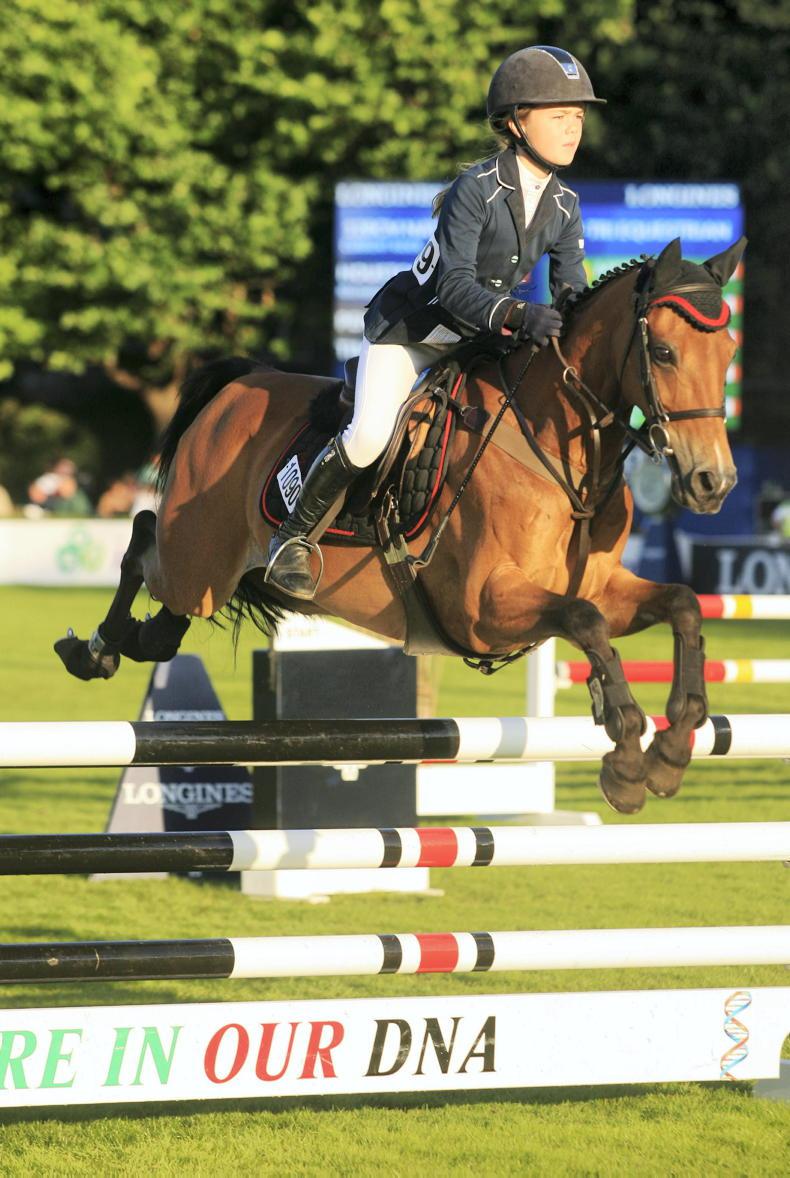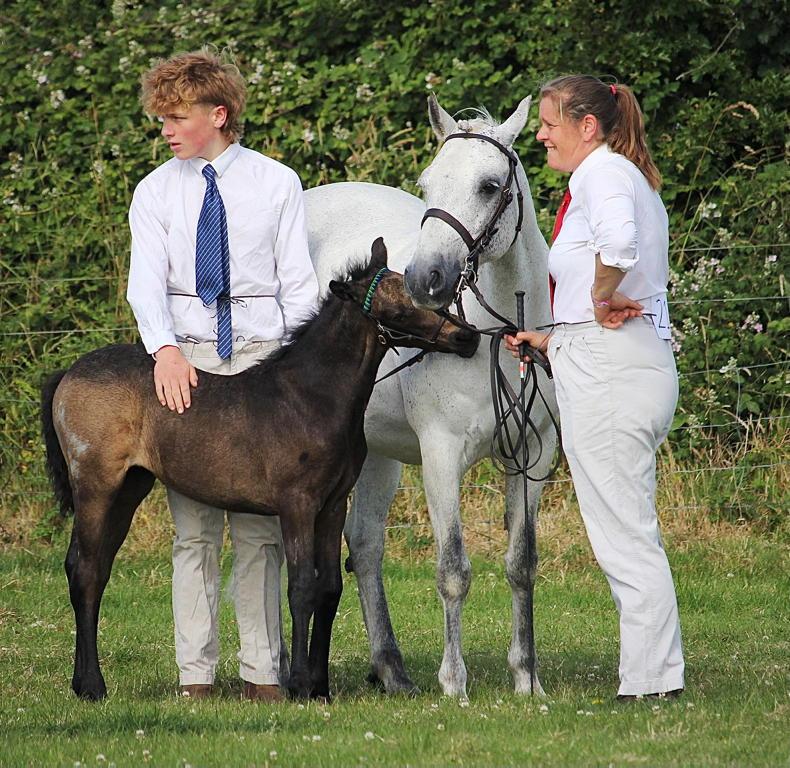KILCREENE Stud was started by my mother, Deirdre Smithwick, back in the 1970s. Deirdre was involved with ponies all her life – she rode in local shows, hunted and even competed in point-to-points. Her father was huntsman of the Sligo Harriers and the family also bred some ponies and horses.
Mum taught and did her BHSAI at Colonel Hume Dudgeon’s. After training as a nurse in London, she returned to manage a stud in Connemara and then to work for Joan Downie, with whom she bought her first Welsh pony.
Soon afterwards, she founded Kilcreene Stud with the foundation mares; Bery Welsh Lyric (a part-bred by Turton Story) and Downland Graceful (Section B). Five and six generations later, these remain our two mare lines.
Deirdre was one of the Welsh Pony and Cob Society of Ireland founding members in the ‘80s. The society has gone from strength to strength, promoting the versatility of the Welsh pony here. Once again I’ve followed the tradition and am now its chairperson.
My sister Aoife and I rode from the age of six, competing in showing, hunting, hunter trials and members of the Kilkenny Pony Club, of which I’m now joint-District Commissioner. We mainly rode young home-bred ponies and, in fact, rode both the great grand-sire Rotherwood Spruce and dams of current broodmares.
We look forward to developing the breeding lines and hope that Kilcreene ponies continue to go from strength to strength. Who knows what the future holds!
1. Tell us about Kilcreene-breds?
We have on average two foals a year. The original and ongoing aim is to breed all-round children’s ponies with an emphasis on ability and versatility. We’ve always felt that correct conformation helps with a longer working life. A good shoulder and front, along with strength in the hind leg, allows for soundness and jumping power.
We breed for length of stride and maneuverability, much-needed qualities in successful showjumping and working hunter ponies. Our Section B stallion Moelview Cherokee really stamps his progeny, both Welsh and small horse mares, with a great length of stride and floating movement, along with his superb temperament.
2. Proudest moment as a breeder?
In an ongoing way, it’s seeing our children riding ponies that are direct descendants of the same foundation mares that we rode and enjoyed as children. However, I suppose the top moment had to be seeing Kilcreene Apollo win the 128cms in the RDS main arena. Kilcreene Basil was also in the top-10. Seeing your breeding compete at Dublin is something special; having two in the top-10, one from each of your mare lines, is fantastic!
Kilcreene Song winning the Nordic 148cms championship was exceptional but that was before modern technology in the 1980s, when it took some time to get newspaper cuttings!
3. Favourite broodmare?
This is a hard one. I think that Kilcreene Athena, a full-sister to Kilcreene Apollo, would have to be one. A real character who loved life, she had no problem jumping out of her field at a trot if she felt like a change of scene.
She won a lot in the showring as a broodmare and was a champion in her short ridden career. Her foals include Welsh bronze medal winner Kilcreene Onyx, (Pony Club hunter trial open championships, working hunter and even race winner); Kilcreene Jasper, a great Pony Club and eventing pony; Kilcreene Granite, second in the 128cms six/seven-year-old class at Dublin last year, not to mention our current part-bred Kilcreene Coral, winner of numerous broodmare classes.
4. Breeding for the Irish pony market – labour of love or profitable?
Definitely a labour of love. So many people want the finished product and not young ponies to bring on, which takes time and patience but is so rewarding. This is a huge problem for breeders.

Charlotte Houston and Kilcreene Apollo winning 128cm championship at Dublin 2014 \ Anne Hughes
5. Describe your winter regime for keeping broodmares/youngstock?
Our mares foal out with me. We try to foal in April or May when the grass is good. After the foals are weaned in autumn, they spend their first winter stabled at night and out by day. After this they are wintered out together with ad-lib hay on a hard pad with field access, rugged and fed when required.
When they’re older, they go to my sister’s farm in the Wicklow Mountains, great for naturally building up muscle and getting them used to farm machinery. We believe that early training should encourage forward movement through hacking out and enjoyable rides with a variety of different natural fences, rather than over-schooling in an arena. Aoife’s location is ideal for this. We like to allow ponies to grow and mature and only start the breaking process when they are four.
6. Do breeders get enough recognition?
Until now, unlike with horses, I don’t believe that pony breeders and lines got enough recognition at all. Happily, breeders are gradually being mentioned when ponies win big competitions.
7. Any incentives you would like to see introduced for pony breeders?
I was thrilled to get a small cheque from the RDS this year as the highest Irish breeder of Kilcreene Granite. A new incentive for ponies, it’s been around for a long time with horses and something I would greatly encourage. A small piece of recognition for years of planning, time and care.
Same as when a horse wins a big competition, I feel that pony breeders should also be mentioned. This encourages people to go to look for that breeder, further encouraging the breeding of top class ponies.
8. If you could have bred any horse?
Cruising. I loved watching him jump with such scope and focus. He passed his ability, temperament and conformation on down the generations which I believe has greatly enriched many an Irish horse.
9. It takes a team - who’s on yours?
Mum started the stud but now, it’s myself and Aoife (Bolton) who work together on the ponies, along with our children. I’m always indebted to Jane Williams for her eye for detail and encouragement in the ponies’ production.
10. The most satisfying part of breeding ponies?
When your children get the opportunity to ride and enjoy them. Both Aoife’s children and mine learnt to ride on the home-bred Kilcreene Brecon.
Oisin started off Kilcreene Chervil, who then went to Aoife’s children. The most versatile of ponies, he competed last summer in senior games with Nicky and represented Ireland in France where they came second. Soon after, he was clear and placed in 90cms show jumping and working hunter classes. Not every pony can do games today and a calm working hunter class the following day!
Our girls have had great fun producing Kilcreene Toffee and Kilcreene Fudge. Marina brought on Fudge, sold on last year, while Isabel had wonderful fun producing the special Toffee over the last two years. Both ponies have great temperaments, superb jumping ability and are now in the UK. We look forward to seeing their name in lights in the future!
A few years ago I put my riding horse in foal to Cherokee to produce a larger pony for my daughter. Isabel is now looking forward to her first season on Kilcreene Serendipity and will also compete our Connemara, Donode Don’t Forget, the last foal bred by the late Countess April Merveldt.
This mare produced Kilcreene Stud’s first Connemara foal last year – Kilcreene Oops I Forgot. Certainly one to watch.


 This is a subscriber-only article
This is a subscriber-only article
 It looks like you're browsing in private mode
It looks like you're browsing in private mode






SHARING OPTIONS: